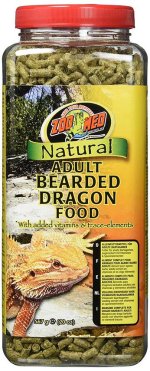Madrigal77
New member
My wife and I just got a couple of female Leopard Gecko’s about 3 weeks ago. We were told they were 4 years old and had been housed together for a little over a year. They came in a 20 gallon fish tank. We started to do a lot of research once we got them, and discovered the having them housed together is a bad idea.
So we got them each an Exo Terra medium low terrarium with heat mats on a thermostat, dome night heat lights, thermometers with hygrometers, and a cool hide, moist hide, and hot hide. We used tile as substrate, but no one in town would cut it to fit for us, so there is about a 1 inch border around that we put Eco Earth in. The’ve both shed in the last week, and both went perfectly with nothing stuck at all.
We’ve done as much research as we can, and feel like their setups are pretty good, but one thing we still have questions about is their feeding and supplement schedule. There seems to be tons of conflicting info on the subject, so we want to make sure we are doing the right thing.
We’ve been feeding them gutloaded crickets with a calcium/d3 dusting every other day, with one feeding a week with Zoo Med Reptivite without D3. One of them doesn’t seem to like crickets much and will only eat 2 or so of them per feeding, so we just got her a bunch of mealworms and she seems to love them and will eat as many as you put in.
We just want to make sure our feeding/supplement schedule is correct as we want to give these girls the best life possible. I’ve attached some photos of their setups. Any tips are appreciated!
So we got them each an Exo Terra medium low terrarium with heat mats on a thermostat, dome night heat lights, thermometers with hygrometers, and a cool hide, moist hide, and hot hide. We used tile as substrate, but no one in town would cut it to fit for us, so there is about a 1 inch border around that we put Eco Earth in. The’ve both shed in the last week, and both went perfectly with nothing stuck at all.
We’ve done as much research as we can, and feel like their setups are pretty good, but one thing we still have questions about is their feeding and supplement schedule. There seems to be tons of conflicting info on the subject, so we want to make sure we are doing the right thing.
We’ve been feeding them gutloaded crickets with a calcium/d3 dusting every other day, with one feeding a week with Zoo Med Reptivite without D3. One of them doesn’t seem to like crickets much and will only eat 2 or so of them per feeding, so we just got her a bunch of mealworms and she seems to love them and will eat as many as you put in.
We just want to make sure our feeding/supplement schedule is correct as we want to give these girls the best life possible. I’ve attached some photos of their setups. Any tips are appreciated!
Attachments
-
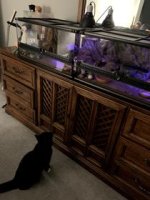 0BC62F69-B646-4ECD-AA58-FC70190CBB97.jpg12.1 KB · Views: 10
0BC62F69-B646-4ECD-AA58-FC70190CBB97.jpg12.1 KB · Views: 10 -
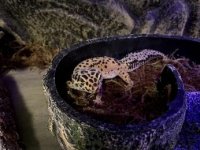 FA2EB65F-40E8-4885-8021-AE0988F09C98.jpg20.3 KB · Views: 12
FA2EB65F-40E8-4885-8021-AE0988F09C98.jpg20.3 KB · Views: 12 -
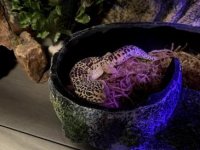 0527E99B-DDAA-4F5A-A0CF-06915A65F1AA.jpg19.8 KB · Views: 10
0527E99B-DDAA-4F5A-A0CF-06915A65F1AA.jpg19.8 KB · Views: 10 -
 ACE9AE2D-DDDE-42BD-BBD9-3DB673CB728E.jpg19.5 KB · Views: 11
ACE9AE2D-DDDE-42BD-BBD9-3DB673CB728E.jpg19.5 KB · Views: 11 -
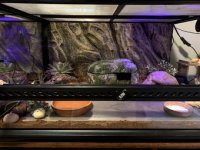 01C9FE1F-3CDC-4F7C-A391-95BB1C926B0F.jpg19.7 KB · Views: 9
01C9FE1F-3CDC-4F7C-A391-95BB1C926B0F.jpg19.7 KB · Views: 9


